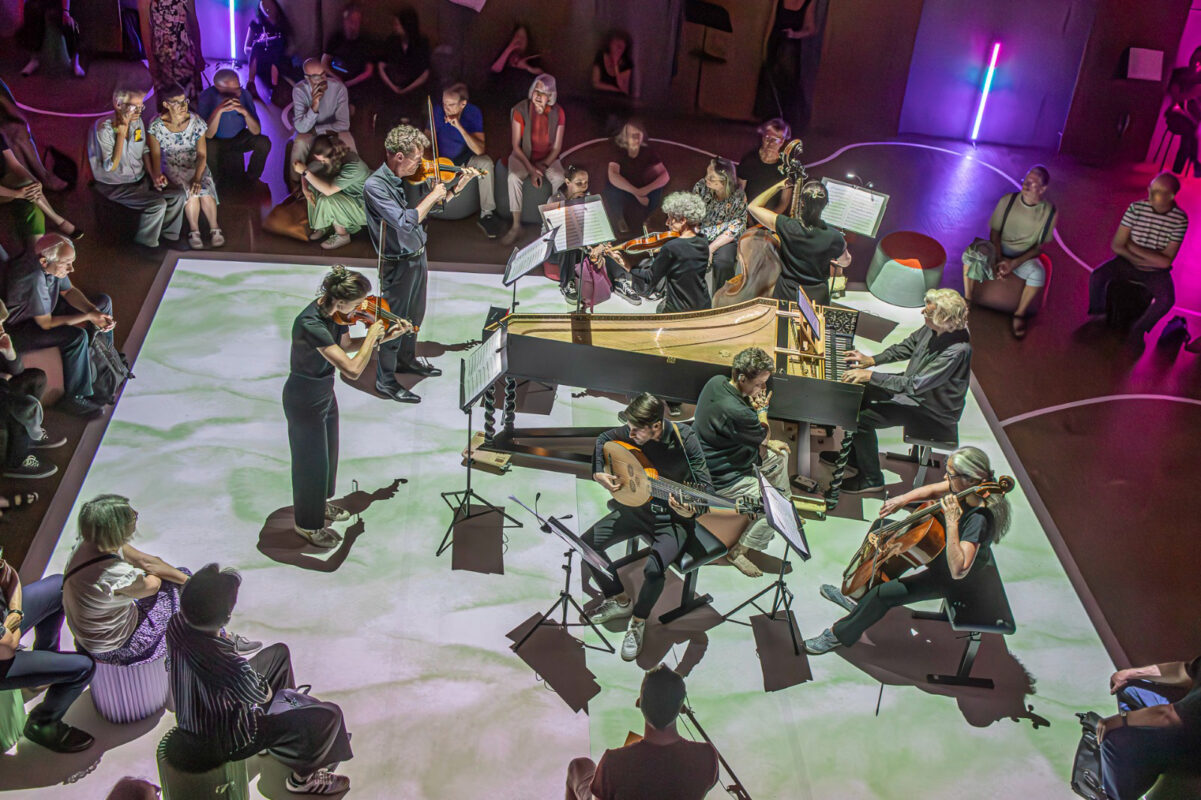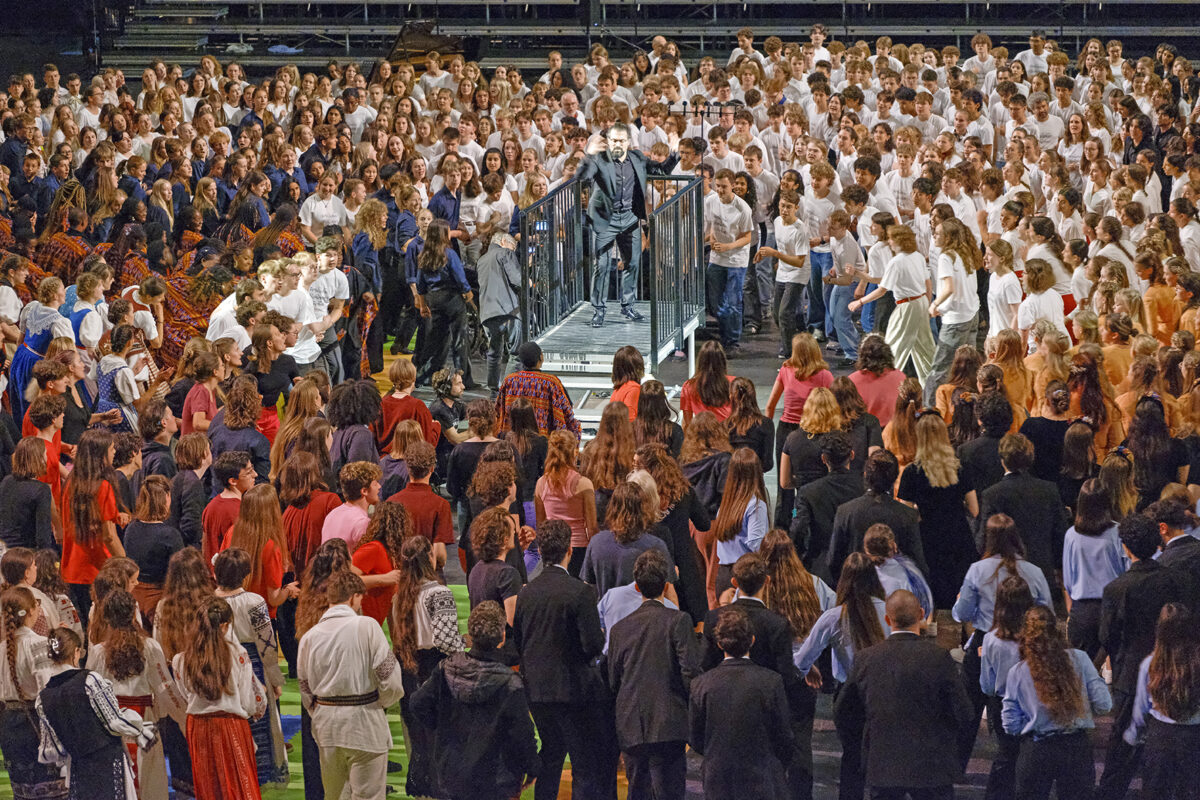Of fear and human warmth - Poulenc's "Dialogues des Carmélites"
Francis Poulenc's moving and disconcerting opera returns to Zurich Opera House after eighteen years. The performance emphasizes the "dialogues" in the title and shows compassion for the characters on stage and the audience.

Of the many great operas of the 20th century, it is one of the most exceptional, one that, for me at least, evokes highly contradictory feelings when experienced: it is as attractive as it is repulsive and alienating. Francis Poulenc's Dialogues des Carmélitespremiered in 1957, in the midst of the heyday of the Darmstadt avant-garde, stands musically outside its era. It is tonal, cantabile, clearly constructed, enchantingly orchestrated, even ingratiating and catchy, it is light and agile in a Mozartian way - and yet it can harden very abruptly at times. It was written by a filou, a causeur and charmer who was both monkish and deeply religious.
This work is not only an opera without love and battle scenes, i.e. without the great theatrical emotions, but actually, as the title suggests, a dialog opera. The text by Georges Bernanos is as sharp as a knife and ideologically tinged: "blackest Catholicism", as a colleague once said, from a time of militant anti-communism. It glorifies the Catholic Church and restitutes it through martyrdom, it undoes enlightenment. You think about this throughout the opera and yet you are drawn deeply into the conflict, even into the abyss.
The audience suffers with them
This is not only due to the historically verified story that the Carmelite nuns of Compiègne were oppressed, captured, condemned and executed by the Jacobins. Behind this, a very human side shines through in this version: the compassion that is transferred to the listener. Based on the true story from 1794, the German writer Gertrud von Le Fort wrote her 1931 novella The last on the scaffold and added a fictional character: the young noblewoman Blanche de la Force, who enters Carmel as Sœur Blanche de l'Agonie du Christ and is drawn into these events. Force and agony (the names speak for themselves!), strength and fear of death, determine the plot. Blanche is on the run, fleeing the world, she is driven by panic and finds safety in the strictness of the order.
-

Ensemble, dancers and dancers
This is what this opera is about to begin with, for which Poulenc found a tonal language that is as simple as it is immediately stirring. And this is also the strength of the new Zurich production, eighteen years after the strong performance directed by Reto Nickler. This is precisely where Dutch director Jetske Mijnssen comes in. She doesn't update anything externally, leaves the costumes (Gideon Davey) in the late 18th century, sets everything in a high, mostly sparse stage design (Ben Baur) that can be changed for the respective scenes and, apart from a narrative dance interlude at the beginning, adds no embellishment. More important are the long, distancing tables at which conversations take place and the many chairs, sometimes disorderly, sometimes orderly positioned in the room, eventually knocked over. It creates an oppressive atmosphere, in which Mijnssen knows how to lead the characters convincingly, especially Olga Kulchynska's Blanche, who is subtle in her vocal and dramatic expressiveness.
The nuns remain individuals
Around them is the heterogeneous circle of nuns, all of whom are strong individualities (and singers): the motherly, somewhat pathetic Prioress (Inga Kalna), the strict Mère Marie (Alice Coote), who is determined to go to extremes, the young, lovely Constance (Sandra Hamaoui), who is prone to visions, and the anxious Jeanne (Liliana Nikiteanu). And there is the first Prioress, who dies in the first act, in an almost undignified manner full of fear of death and despair, portrayed hauntingly by Evelyn Herlitzius. We are not confronted by faith machines, but by vulnerable, insecure people who react in different ways. And this is ultimately what lends the performance an engaging human warmth, something that the orchestra, the Philharmonia Zurich under the direction of Tito Ceccherini, also radiates: compactness and clarity, rich in color, never going to extremes. This warmth, which the women find among themselves despite the monastic austerity, allows the fear to emerge all the more clearly. Mijnssen works with body language in an impressive way here.
-

Ensemble and choir
Gracious staging
That leaves the famous final scene, which is far more than an opera finale. Similar to the last image in Bernd Alois Zimmermann's The soldierswhere the times fade over each other and shoot together to form an overall picture of the war, here the personal fate of the women is exaggerated in a massacre, and it actually presents every director with an unsolvable problem. How to show death? The nuns die one after the other on the scaffold. Accompanied by a restless pulse, which often appears in Poulenc's music when death is involved, they sing the Salve Regina. Each time the guillotine whizzes down audibly, one voice falls silent until only one remains, that of Blanche, who has decided to be martyred.
This ending is a strength, but also a weakness of the piece, because it is so extremely impressive theatrically and threatens to obliterate the rest of the opera. The human interaction, the dialogue in a broader sense, which characterizes the work up to this point, turns into a killing ritual, into a collective death. One can imagine how painful it must have been for the composer to let his creatures die and to set the harsh cutting sounds of the cleaver into the gentle yet strong female singing: relentless, realistically irregular and musically "meaningful". This is where art and skill reach the limits of cruelty.
-

Blanche - Olga Kulchynska / Sœur Constance - Sandra Hamaoui
In the Zurich production, this is precisely what is softened. The final scene does not extinguish anything, but actually fits logically into the evening, even if it loses some of its harshness, as if one feels sorry for the composer and his creatures. The guillotine is not acoustically prominent, but remains almost in the background. As a sign of death, the women only lower their heads. The scene thus loses its horror. Mijnssen insists on the individuality of the nuns; in death, each of them crosses her name off a wall and leaves the stage with her head bowed. This is merciful, both to the characters and to us, and yet it somewhat obscures the incommensurability of this monstrous opera.
until March 5, 2022








